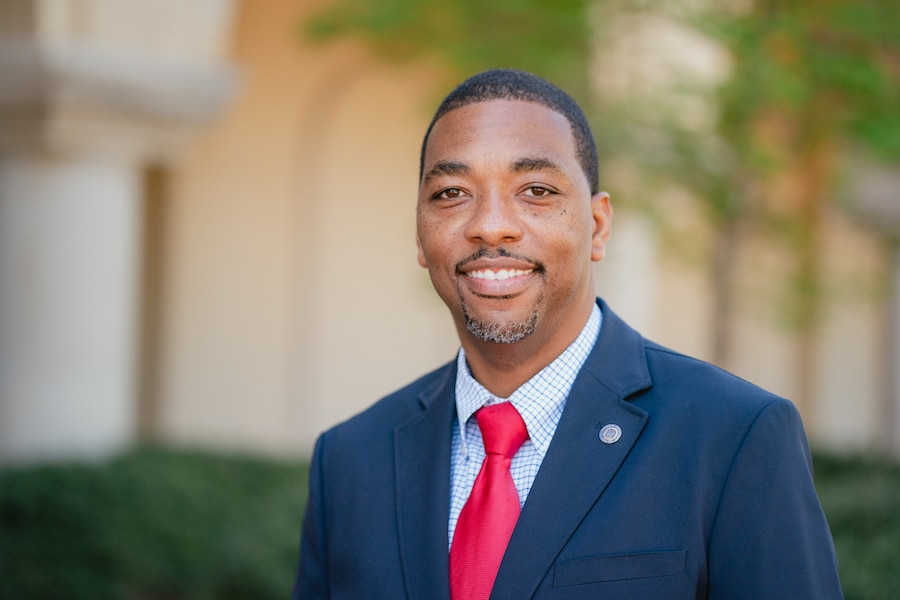Editor’s note: The TEXAN earlier interviewed SBC presidential candidate Albert Mohler for an article posted online Jan. 27, 2020, and reviewed his candidacy in an Oct. 23, 2020 article. Both Mohler articles are accessible at TEXAN online. The May print edition of the TEXAN will include an interview of the fourth announced SBC presidential candidate, Ed Litton.
VANCOUVER, Wash.—Randy Adams intends to underscore transparency and accountability of Southern Baptist Convention entities if elected SBC president during the June 15-16 annual meeting in Nashville.
One of four announced nominees for SBC president, Adams has been executive director/treasurer of the Northwest Baptist Convention since 2013 and is a member of the Go Church plant in Ridgefield, Wash.
Adams, online at randyadams.org, led the Baptist General Convention of Oklahoma’s Church Outreach Team from 2004-2013, encompassing BGCO work in evangelism and missions, church planting, leadership development, associational outreach and chaplaincy. He also served as a pastor at three churches over a 19-year period.
He was a trustee of California’s Golden Gate Baptist Theological Seminary (now Gateway Seminary) from 2002-2012, serving as chairman from 2009-2011.
Adams addressed the priorities he would set forth as SBC president in answer to questions from the Southern Baptist TEXAN.
1) Four proponents of biblical inerrancy have declared their willingness to serve as SBC president. What is distinctive about your vision for serving in this role?
The SBC has suffered the worst decade in its 175-year history of advancing the Great Commission. We must return to the path that enabled us to become the greatest missionary force in our nation’s history. In 2010 the SBC left the path of local control of mission strategy and chose a centralized, top-down control of North American missions. Baptisms have since plummeted to a level not seen since the 1930s, down more than 100,000 per year. New church starts have dropped to levels not seen in over 40 years. Our international mission force has been reduced by 2,000 missionaries. Cooperative Program (CP) mission giving has dropped by over $60,000,000 since 2010, or $160,000,000, considering inflation.
Renewing the effectiveness of our Great Commission advance will happen as we return to a New Testament missiology in which decisions about strategy and resources begin with the local church, supported by local associations and state conventions, with resourcing from the national entities. Actions in three specific areas will put us on the path to needed reform:
1) Transparency builds trust. We must have transparency in finances and performance metrics. Our SBC entities must “open the books” so that every church can know how their mission dollars are spent.
2) Accountability preserves trust. In the past several months there have been noteworthy examples of massive failure in which there has been no clear accountability. The Ethics & Religious Liberty Commission (ERLC) joined an amicus brief on behalf of NAMB, filed in the U.S 5th Circuit Court of Appeals, in which they argued that the SBC is a “hierarchy” with the SBC serving as the “umbrella” organization over all churches, associations and conventions. This violation of Baptist polity and governing documents puts every Southern Baptist church at risk. A few months ago we learned that the former chair of Lifeway’s trustees approved a compensation/transition package of more than $1,000,000 to the outgoing president without informing the board’s Executive Committee or Compensation Committee. This same trustee remains on Lifeway’s board, while also having three book contracts with Lifeway in violation of SBC Bylaw 15F which forbids direct or indirect compensation to a trustee of an entity. Our churches deserve better.
3) Participation in the annual meeting of the SBC must expand to every church. This could happen as associations and state conventions provide locations in which to participate in the annual meeting, or it could be done through technology. The time has come to enable all our churches to participate without the expense of traveling to a distant location for the annual meeting.
My vision is birthed from experience as one who entered the SBC family through collegiate ministry at Montana Tech in Butte, Mont. I was a petroleum engineering student, preparing for what I thought would be my life’s work. That changed because of the one and only Bible-teaching Christian group on campus, the Baptist Student Union. Through BSU I learned to love God’s Word and to share the gospel. I also learned the value of cooperation and the Cooperative Program (CP). I learned that Southern Baptists were committed to reaching the lost with the message of Jesus, even in places far from the South like Montana.
While pastoring in McAlester, Okla., the executive director in Oklahoma asked me to lead the state convention’s evangelism and missions team. In this role I learned how cooperation works best between local churches, associations, state conventions and national SBC entities. My leadership of the Northwest Baptist Convention has furthered my understanding of how Southern Baptists can cooperate to advance the mission of God.
2) What are two of the foremost challenges facing the SBC today?
Restoring trust in the SBC missionary system is our greatest need. In 2007, 34,322 churches contributed to missions through the Cooperative Program (CP). By 2019, that number fell to 29,064 churches, a decrease of 5,258 churches, and 40 percent of SBC churches did not contribute to CP missions in 2019. Moreover, the budget percentage of CP per church fell from 6.20 percent to 4.82 percent in just one decade.
The second challenge is that of returning to true collaborative and cooperative partnership between NAMB, state conventions, local associations and local churches. NAMB has greatly reduced their work in the South and nearly eradicated partnership with state conventions and associations outside the South. Despite claims that centralization of church planting would increase mission effectiveness, the opposite has happened, even as NAMB’s church planting budget has grown to $75,000,000, an increase of over $50,000,000 in less than 10 years,
3) Has the COVID pandemic amplified or accelerated these challenges?
The COVID pandemic has made everything more difficult. For one thing, the inability to meet together in conferences, training events, and even gathering for fellowship, has placed a strain on relationships. While we are seeing a decline in baptisms and other Great Commission metrics due to COVID, we are learning that our people are biblical stewards, not merely religious consumers. Giving to our churches has not suffered during the pandemic as much as many feared.
4) How would you hope to use the SBC president’s influence/bully pulpit to impact these major challenges?
Restoring trust in the SBC missions system requires more than anecdotes. You must look at the broader picture and the trends. Too often this information is not provided because in a period of decline leaders often fail to reveal the brutal facts. After a decade of decline we must ask and answer the all-important question, “Why?”
I will also call for an end to the use of non-disclosure agreements (NDAs) by our SBC entities, and for most of those currently silenced by NDAs to be released from them. They are used too often to prevent exposing what might be deemed “whistleblower” information. Integrity does not fear Southern Baptists having a right to know the truth.
5) What would you say to those, particularly Black pastors, who are considering leaving the SBC because of discouragement over racial tension?
Racial tension in our nation affects every community and each institution in which there is diversity, including the church. The SBC is a large convention of churches, with great linguistic and ethnic diversity, more than any other network of churches. Nearly a third of the churches in the Northwest Baptist Convention, which I serve, worship in a language other than English. I am frequently in Korean, Russian, Spanish and Vietnamese language churches, among others. The beauty of the SBC is not simply our diversity, but that our diverse network of churches unites for making disciples of Jesus Christ among all the peoples and languages of the world. Southern Baptists find unity in our theological convictions, as outlined in the Baptist Faith & Message 2000, and in our common mission commitment to the sending of missionaries, the education of pastors and missionaries and the evangelization of our nation.
One final point is that the source of much of the racial tension in the SBC is a lack of relationship to formulate ways to approach the issues and build respect for each other. This is not the sole source of tension, but it is a major source, from what African-American pastors have told me. We need to talk together, plan together and pray together.
6) Why should any pastor or church remain with the SBC, or join it—what is good and strong about our convention right now?
When someone surrenders to ministry and missions in your church, you have a network of schools and seminaries for training, a network of churches in which to serve, and mission capabilities that are unmatched. With all our troubles, and they are substantial, Southern Baptists still train more leaders, start more churches and send more missionaries than any other ministry network. We are a people who strive to obey the Scriptures, which we hold to be inerrant and completely sufficient for faith and practice.














